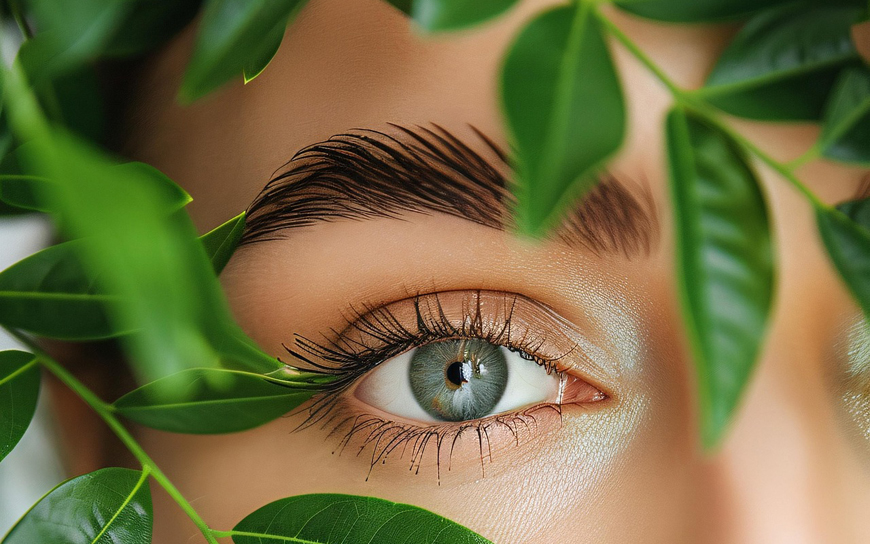
Clays are used since ancient times, as they were known for their healing properties. Over time, clays have become very popular and nowadays are widely used in many beauty products, but most commonly found in face masks. There are different clays, with different properties, suitable for different skin types. In this article you will learn about the 4 more popular types of clays used for face masks. But first, let’s find out more about their benefits.
Clay benefits:
-Detox the skin and deeply cleanse the pores. Remove dead cells, dust, impurities and pollutants and help the skin “breathe”.
-Absorb oiliness, control excess sebum production and prevent breakouts.
-Tighten the pores and minimize their appearance.
-Improve blood circulation, boosting cell turnover and skin rejuvenation.
-Smooth the texture of the skin and even the skin tone.
-Make hair soft and shiny, and restoring strength and elasticity.
How to use clay masks

If you like to apply clays on your skin, you better follow some simple rules:
-Clay masks must be applied on clean and dry skin. Wait for 10-15 minutes and then rinse with lukewarm water. Avoid letting the mask fully dry on your skin because this will dehydrate it and even cause some irritations. Clay masks are meant to draw out pollutants and dirt from your skin and 10 minutes is enough time to achieve this. If you leave the clay mask for too long, will rip off the natural oils and disrupt the pH balance.
-There are different types of clays suitable for different skin types. Before you use a clay, get to know its properties and be sure that it is ideal for your skin type and your skin needs. Using a skin care product or ingredient, that is not suitable for your skin, will not be beneficial, and even worse; it may cause harm to your skin (dehydration, redness, irritations, etc.).
-People with mixed combination, very often notice that in some parts of their face the skin is dry, and in some other parts (usually T zone: forehead, nose, chin), the skin is oily. If this sounds familiar to you, then you should consider using two different types of clays on your face to get the best results.
Popular Clay Types

Now, let’s find out the different types of clay and which one is the right for your skin type:
Kaolin Clay
Kaolin clay is very popular in face masks. It is also widely used in natural deodorants, baby powders, shaving bars and solid shampoos. It comes in many colors. The most common color of kaolin clay is white - pink, red, and yellow are also very popular. It has a soft and silky texture and a very low absorption.
White clay is the mildest and ideal for very dry and sensitive skin. It soothes irritations and reduces inflammations. It is suitable for skin with dermatological problems, such as rosacea an eczema.
Red clay is way more absorbent and thus ideal for oily or prone to acne skin. It improves the appearance of enlarged pores, detoxifies skin, absorbs excess sebum and deeply cleanses the skin’s pores.
Pink clay is a combination of white and red clay. It is gentle and thus suitable for sensitive skin, but it also effectively exfoliates and smooths rough skin. It boosts cell turnover and skin rejuvenation, which makes it also ideal for mature skin.
Yellow clay is almost as mild as white clay, but more absorbent and exfoliating. It is ideal for combination skin, but also suitable for dry, sensitive and mature skin. It is often found in brightening masks as it can even skin tone and tone dull skin.
French Green Clay
It is found in France and its green color comes from its composition of decomposed plant matter and iron oxide. It is rich in magnesium, calcium and phosphorous, and known for its absorbing and exfoliating properties. The texture is thick and slightly rough. Usually found in face masks, handmade soaps, and anti-dandruff solid shampoos.
French green clay reduces excess sebum, and removes pollutants, impurities and black heads. It deeply cleanses the skin and reduces the appearance of enlarged pores. It is ideal for oily skin and skin prone to acne. It usually dehydrates skin, so after the use, a moisturizer must be applied.
Bentonite Clay
The most absorbent clay. It has a soft and silky texture but is ultra- absorbent and ideal for those with very oily skin. It derives from volcanic ashes and when mixed with water, it expands and acts like a sponge, absorbing more than its mass. It draws out dirt and bacteria and absorbs oil and moisture. It is rich in calcium, magnesium, zinc and iron and is widely used in face masks, shaving creams, tooth powders, and natural deodorants.
It has strong antibacterial properties and thus usually found in anti-acne face masks. It is considered to be the best clay mask for oily skin and its use should be avoided in dry and sensitive skin. Bentonite clay also reduces swelling thanks to its anti-inflammatory properties and tightens the skin.
Rhassoul Clay
Rhassoul clay comes from Morocco and has a red-brown color. It is suitable for all skin types, and ideal for sensitive and mature skin. Its texture is slightly rough, but this characteristic, gives Rhassoul clay its exfoliating properties. It is rich in magnesium, zinc and iron, and widely used in hair care products, such as solid shampoos, conditioners, hair masks and dry shampoos. It is considered to be the best clay for hair care, as it softens the hair and brings back its elasticity.
When used as a face mask, it reduces black heads, removes pollutants and dirt, and prevents breakouts. Rhassoul clay improves skin texture and can be used more often than other clays, as it does not dehydrate the skin. It is also believed that long-term use can lead to excess sebum control.
If you love clay beauty masks, take a look here.


